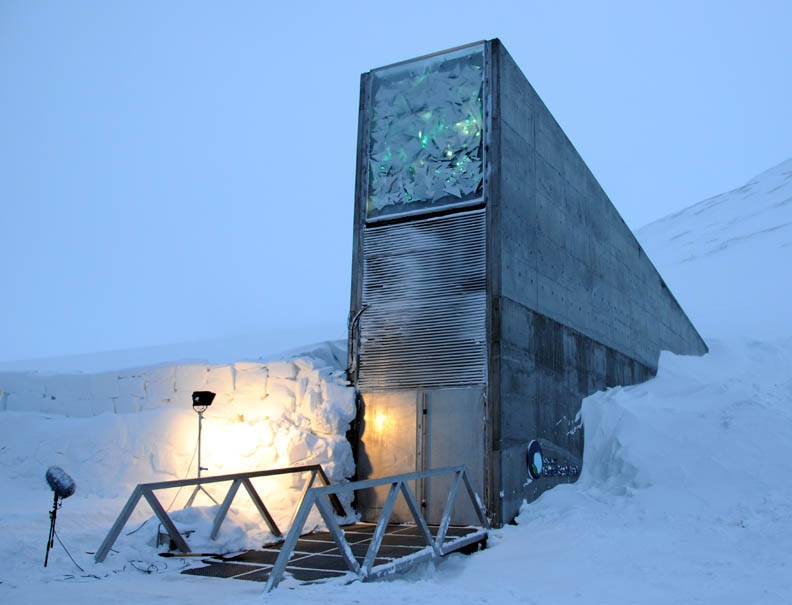March 14, 2012

It’s an odd contradiction when an Arctic island, relatively devoid of life, is the gatekeeper of agricultural preservation. The Svalbard Global Seed Vault, located on the Norwegian island of Spitsbergen, serves as a failsafe, a master backup for approximately 1,400 seed banks across the globe.
And what a backup: Spitsbergen lies well above the Arctic Circle. Even by airplane it’s several hours above the Circle — polar bears, ice and more ice. The facility, like a massive pillbox bunker, stretches 400 feet into the side of a mountain. Temperatures in the mountain stay at about 21 degrees F — ideal for seed preservation.
Time grinds mountains to dust, but it’ll be a tough gnaw on the Global Seed Vault’s steel and concrete. The structure is designed to be in place several thousand years on. Asteroids and meteors — no matter. Climate change and nukes — accounted for. Earthquakes and floods — not a problem. Terrorism and wars — even jihadis detest suicide missions north of the Arctic Circle. (Although no one would be shocked if some Iranian mullah issued a fatwa against Western seeds.)
See related: AK-47 rifle was agriculture’s giant loss?
The vault may conjure doomsday images, but after four years of operation, it’s already home to 740,000 seed samples and prepared for millions more. A Syrian seed bank, fearing the chaos of anti-government uprisings, recently sent 25,000 samples to the Svalbard Vault. Globally, gene banks house millions of seed samples, but in time, the Svalbard bank will surpass them all in significance — a Noah’s ark built of concrete.
As the newest global seed bank thrives on Spitsbergen, the oldest global seed bank may soon be shuttered up. The Pavlovsk agricultural station in St. Petersburg, Russia, has been under the threat of housing development for a few years. It was once part of the Vavilov Institute — a historic network of Russian field stations and seed banks. Pavlovsk is part of a tale that rivals anything in agricultural history.
In World War II, the Germans laid siege to St. Petersburg (Leningrad at the time). It was a vicious assault, even by Nazi standards, and ended with approximately 1 million Russian civilians dead. The siege lasted three years from 1941 to 1944. (No doubt by this point Hitler pined away for the days of easy invasions: France, Belgium, Poland ...) As German shells pinned down Leningrad and choked the city, thousands of Russians began dying of starvation. Hitler was aware of Vavilov’s significance and had assigned a commando unit to capture the Vavilov seed resources.
Vavilov Institute workers quickly found themselves holed up inside of field stations, including Pavlovsk, protecting troves of seeds from a citizenry driven mad with hunger. The Vavilov Institute headquarters, on St. Isaac Square in St. Petersburg, became a scene seemingly plucked from the pages of fiction: By the end of the German siege in 1944, nine Vavilov scientists had died of starvation or malnutrition complications — after refusing to eat what they viewed as Russia’s future. They died literally feet from a mother lode of food. They traded death for life, a zero-sum game that will never be forgotten by Russians.
If apocalypse ever arrives on Spitsbergen, no one will be asking the Svalbard scientists to match up with the “Vavilov nine.” But if there was ever a place where an agricultural hope might be preserved — the Spitsbergen ice is it. The Svalbard Global Seed Vault is the ultimate paradox: a tomb that gives life.
(For more on the Svalbard Vault, see below for 60 Minutes coverage.)
You May Also Like




